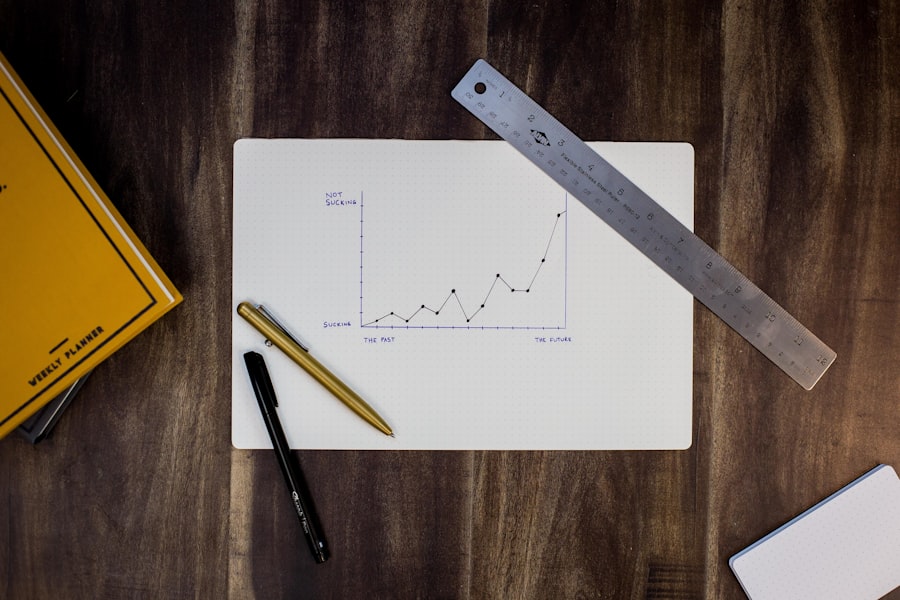In the contemporary landscape of commerce and technology, the term “big data” has emerged as a pivotal concept that encapsulates the vast volumes of structured and unstructured information generated every second. This data, which encompasses everything from social media interactions to online shopping behaviors, is not merely a byproduct of digital activity; it is a treasure trove of insights waiting to be unearthed. As businesses increasingly recognize the potential of big data, they are harnessing its power to understand consumer trends more deeply than ever before.
The ability to analyze this data allows companies to identify patterns, preferences, and behaviors that were previously obscured, enabling them to tailor their offerings and marketing strategies with unprecedented precision. The significance of big data in shaping consumer trends cannot be overstated. It serves as a lens through which businesses can view the evolving landscape of consumer preferences and behaviors.
By leveraging advanced analytics and machine learning algorithms, organizations can sift through mountains of data to extract actionable insights. This not only enhances their understanding of current market dynamics but also equips them with the foresight needed to anticipate future trends. As a result, big data has become an indispensable tool for businesses aiming to stay competitive in an increasingly complex marketplace, where consumer expectations are continually shifting and evolving.
Key Takeaways
- Big data is revolutionizing the way businesses understand and respond to consumer trends.
- Big data has a significant impact on consumer behavior, allowing businesses to tailor their products and services to meet consumer needs more effectively.
- Big data is being used to predict market trends, giving businesses a competitive edge in the marketplace.
- The retail industry is being transformed by big data, with businesses using it to optimize inventory management and enhance the customer experience.
- Big data is playing a crucial role in personalized marketing, allowing businesses to target consumers with highly tailored and relevant messaging.
- Ethical considerations are important in big data analysis, as businesses must ensure that consumer privacy and data security are protected.
- The future of big data in predicting consumer trends looks promising, with continued advancements in technology and data analysis techniques.
The Impact of Big Data on Consumer Behavior
The influence of big data on consumer behavior is profound and multifaceted. With the ability to track and analyze consumer interactions across various platforms, businesses can gain a comprehensive understanding of how individuals make purchasing decisions. For instance, data analytics can reveal the factors that drive consumers to choose one product over another, such as price sensitivity, brand loyalty, or social influence.
This granular insight allows companies to refine their marketing strategies, ensuring that they resonate with their target audience. Moreover, by monitoring real-time data, businesses can adapt their offerings in response to changing consumer preferences, thereby enhancing customer satisfaction and loyalty. Furthermore, big data has transformed the way consumers engage with brands.
The proliferation of digital touchpoints—ranging from social media to e-commerce platforms—has created a wealth of data that reflects consumer sentiment and behavior. Companies can analyze this information to identify trends in consumer engagement, such as peak shopping times or popular product features. This level of insight enables businesses to create more relevant and timely marketing campaigns that speak directly to consumer needs and desires.
As a result, consumers are not only more informed but also more empowered in their purchasing decisions, leading to a dynamic interplay between businesses and their customers.
The Use of Big Data in Predicting Market Trends
Predicting market trends has traditionally been a challenging endeavor for businesses, often relying on intuition or historical data analysis. However, the advent of big data has revolutionized this process by providing organizations with the tools necessary to make data-driven predictions with greater accuracy. By analyzing vast datasets that encompass consumer behavior, economic indicators, and industry developments, businesses can identify emerging trends before they become mainstream.
This proactive approach allows companies to position themselves strategically within the market, capitalizing on opportunities that may otherwise go unnoticed. Moreover, the predictive capabilities of big data extend beyond mere trend identification; they also facilitate scenario planning and risk assessment. By employing sophisticated algorithms and machine learning techniques, organizations can simulate various market conditions and assess potential outcomes based on different variables.
This level of foresight is invaluable in today’s fast-paced business environment, where agility and adaptability are crucial for success. As companies continue to refine their predictive analytics capabilities, they will be better equipped to navigate uncertainties and make informed decisions that drive growth.
How Big Data is Transforming the Retail Industry
The retail industry stands at the forefront of the big data revolution, experiencing transformative changes that redefine how businesses operate and engage with consumers. Retailers are increasingly leveraging big data analytics to optimize inventory management, enhance supply chain efficiency, and improve customer experiences. By analyzing purchasing patterns and consumer preferences, retailers can make informed decisions about stock levels, ensuring that popular items are readily available while minimizing excess inventory.
This not only reduces costs but also enhances customer satisfaction by ensuring that consumers find what they are looking for when they shop. In addition to operational efficiencies, big data is reshaping the customer experience in retail settings. Through personalized recommendations based on past purchases and browsing behavior, retailers can create tailored shopping experiences that resonate with individual consumers.
For example, online retailers often utilize algorithms that suggest products based on previous interactions, effectively guiding customers toward items they are likely to purchase. This level of personalization fosters a deeper connection between consumers and brands, ultimately driving sales and loyalty. As retailers continue to embrace big data technologies, they will be better positioned to meet the evolving demands of consumers in an increasingly competitive landscape.
The Role of Big Data in Personalized Marketing
Personalized marketing has emerged as a cornerstone of modern advertising strategies, and big data plays a crucial role in its effectiveness. By harnessing vast amounts of consumer data—from demographics to online behavior—businesses can craft highly targeted marketing campaigns that resonate with specific audience segments. This level of personalization not only enhances the relevance of marketing messages but also increases the likelihood of conversion.
For instance, a company may use big data analytics to identify a segment of consumers who frequently purchase eco-friendly products and tailor its messaging accordingly, highlighting sustainability initiatives and green product offerings. Moreover, big data enables marketers to refine their strategies in real-time based on consumer responses. By analyzing engagement metrics such as click-through rates and conversion rates, businesses can quickly assess the effectiveness of their campaigns and make necessary adjustments.
This agility allows marketers to optimize their efforts continuously, ensuring that they deliver the right message at the right time to the right audience. As consumers become increasingly accustomed to personalized experiences across various platforms, the ability to leverage big data for targeted marketing will be essential for brands seeking to maintain relevance and drive engagement.
Ethical Considerations in Big Data Analysis
Addressing Ethical Concerns in Big Data Usage
The benefits of big data are substantial, but they come with a host of ethical considerations that must be addressed by organizations utilizing this powerful tool. One primary concern revolves around consumer privacy; as businesses collect vast amounts of personal information, there is an inherent risk of misuse or unauthorized access. Consumers are becoming increasingly aware of how their data is being used, leading to heightened scrutiny regarding privacy practices.
Protecting Consumer Data and Preventing Bias
Companies must navigate this landscape carefully by implementing robust data protection measures and being transparent about their data collection practices. Additionally, there is the potential for bias in big data analysis that can lead to discriminatory practices or reinforce existing inequalities. Algorithms trained on historical data may inadvertently perpetuate biases present in that data, resulting in skewed outcomes that disadvantage certain groups.
Mitigating Risks and Fostering Ethical Responsibility
To mitigate these risks, organizations must prioritize ethical considerations in their data practices by ensuring diversity in their datasets and regularly auditing their algorithms for fairness. By fostering a culture of ethical responsibility around big data usage, companies can build trust with consumers while harnessing the power of analytics for positive outcomes.
The Future of Big Data in Predicting Consumer Trends
As we look ahead, the future of big data in predicting consumer trends appears both promising and complex. The rapid advancement of technology—particularly artificial intelligence and machine learning—will continue to enhance our ability to analyze vast datasets with greater speed and accuracy. This evolution will empower businesses to not only identify current trends but also anticipate shifts in consumer behavior before they occur.
As predictive analytics becomes more sophisticated, organizations will be able to create highly personalized experiences that cater to individual preferences on an unprecedented scale. However, this future also necessitates a careful consideration of ethical implications as businesses strive for deeper insights into consumer behavior. Striking a balance between leveraging big data for competitive advantage while respecting consumer privacy will be paramount.
As regulations surrounding data protection evolve globally, companies will need to adapt their practices accordingly to maintain compliance while still harnessing the power of big data analytics. Ultimately, the future landscape will be defined by organizations that prioritize ethical considerations alongside innovation—those that can navigate this intricate balance will emerge as leaders in understanding and predicting consumer trends in an ever-changing marketplace.
If you’re interested in understanding how big data influences consumer electronics trends, you might find the article on the Samsung Galaxy S21 insightful. It explores how consumer preferences and technological advancements drive the development of new smartphones. You can read more about it here. This article is a great complement to discussions on big data’s role in predicting consumer trends, as it provides a concrete example of how data analysis and consumer feedback shape product features and marketing strategies.
FAQs
What is big data?
Big data refers to large and complex sets of data that can be analyzed to reveal patterns, trends, and associations, especially relating to human behavior and interactions.
How is big data used in predicting consumer trends?
Big data is used in predicting consumer trends by analyzing large volumes of data from various sources such as social media, online transactions, and customer feedback. This analysis helps businesses understand consumer behavior and preferences, allowing them to make informed decisions about product development, marketing strategies, and customer engagement.
What are the benefits of using big data to predict consumer trends?
Using big data to predict consumer trends allows businesses to gain valuable insights into consumer behavior, preferences, and purchasing patterns. This can help businesses make more informed decisions, improve customer satisfaction, and stay ahead of market trends.
What are some examples of how big data has been used to predict consumer trends?
Big data has been used to predict consumer trends in various industries, such as retail, e-commerce, and entertainment. For example, analyzing social media data can help businesses understand popular trends and preferences among consumers, while analyzing online transaction data can help businesses identify patterns in purchasing behavior.
What are the challenges of using big data to predict consumer trends?
Challenges of using big data to predict consumer trends include managing and analyzing large volumes of data, ensuring data privacy and security, and interpreting the data accurately to make informed predictions. Additionally, businesses may face challenges in integrating big data analysis into their existing processes and systems.



